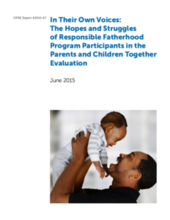Displaying 1941 - 1950 of 2215
This article describes a program at a prison in California, USA that allows incarcerated mothers to live with their young children in a nursery in the prison.
The National Council for Adoption (NCFA) and the Joint Council on International Children's Services have teamed up to launch a new conference: Putting Family First, From Family Strengthening to Adoption. The conference will be held in Arlington, VA (metro D.C.) from June 22, 2015 to June 24, 2015.
A 20 year-old man from the United States, Matthew Lane Durham, has been convicted of sexually abusing children at a children’s home in Kiambu County, Kenya, where he was volunteering.
The MenCare Campaign in collaboration with the Clinton Foundation’s No Ceilings: The Full Participation Project and HeForShe: UN Women Solidarity Movement for Gender Equality, is hosting a launch of the world’s first-ever report on the State of the World’s Fathers – providing a global view of the state of men’s contribution to parenting and caregiving around the world.
The Faith to Action Initiative (F2A) is seeking a part-time Project Consultant.
This study replicated and extended previous research which identified the small proportion of highly productive foster parents who provide a disproportionate amount of care in the United States. This study used a nationally representative sample of foster families (N = 876) with a focus on willingness to foster, and actually fostering, children with special needs.
This study reports on results of a national survey conducted in the United States about the attitudes, perceptions, and utilization of evidence-based practices (EBPs) in residential care settings.
This qualitative study focused on disadvantaged women in the US child welfare system who have lost their parental rights.
In this book, Laury Oaks discusses “Baby safe haven” laws in the United States and the attitudes towards women who use baby safe havens.
This report describes themes and findings from the first round of in-depth interviews conducted as part of a qualitative study on the views and experiences of fathers who voluntarily enroll and participate in Responsible Fatherhood (RF) programs in the US.

